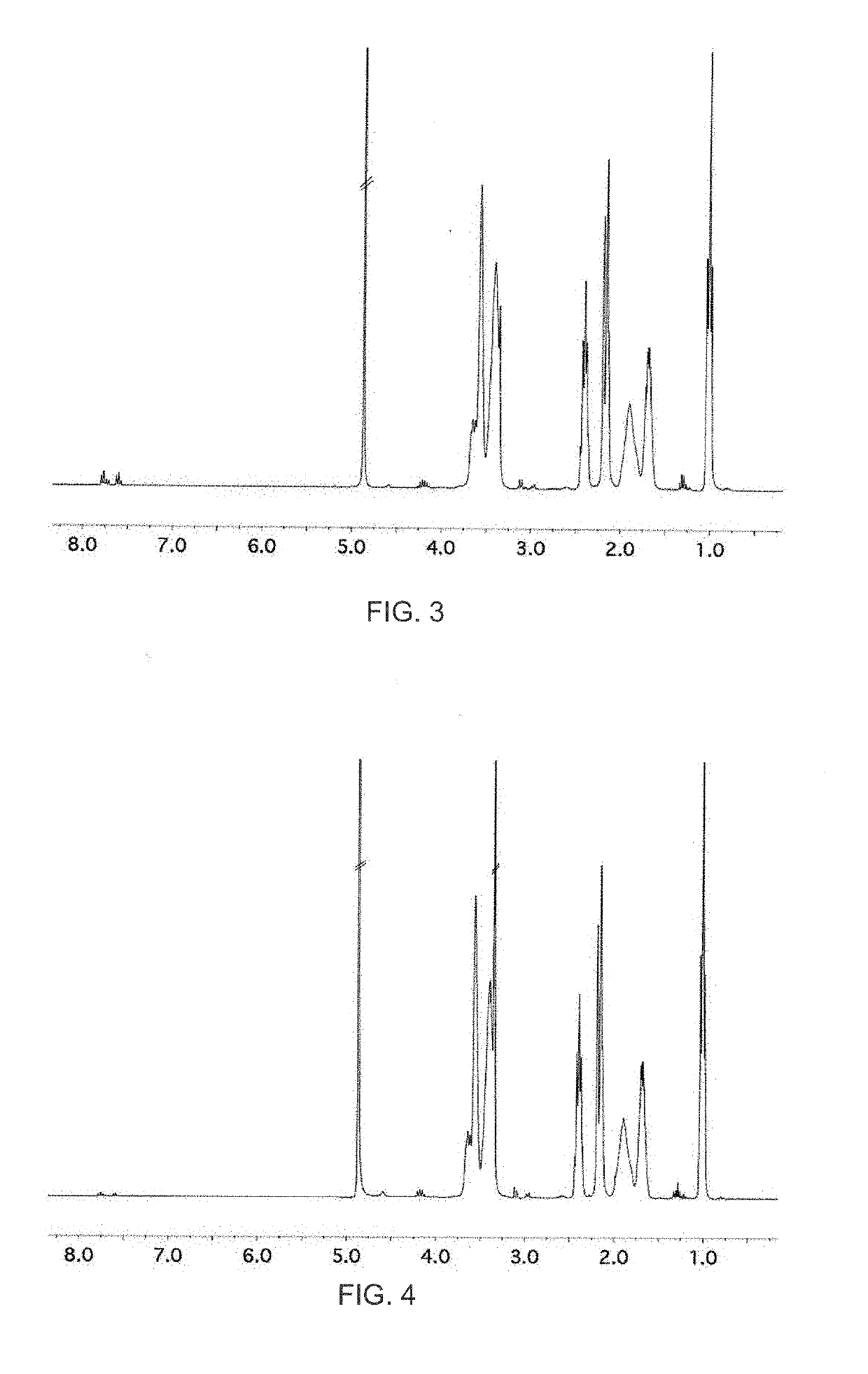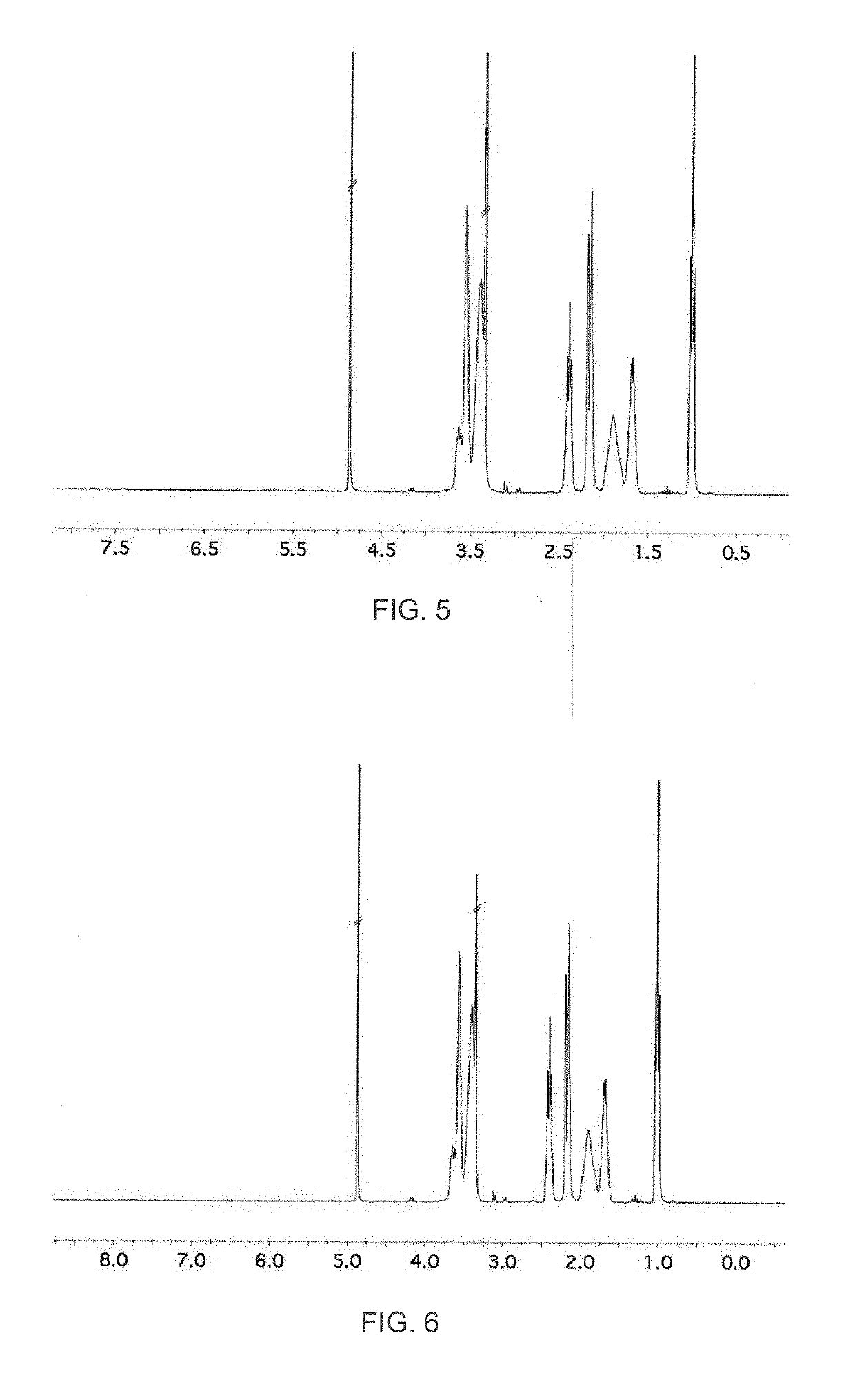Thermogelling supramolecular sponge as self-healing and biocompatible hydrogel
a biocompatible hydrogel and supramolecular technology, applied in the direction of prosthesis, pharmaceutical non-active ingredients, additive manufacturing apparatus, etc., can solve the problems of major application and further development limitations, shortfall of suitable and versatile bioinks, etc., to improve thermogelling and rheological properties
- Summary
- Abstract
- Description
- Claims
- Application Information
AI Technical Summary
Benefits of technology
Problems solved by technology
Method used
Image
Examples
Embodiment Construction
[0107]Reference will now be made in detail to the preferred embodiments of the present invention. It is to be understood that the following examples are illustrative only and the present invention is not limited thereto.
[0108]Several batches (P1 to P5) of Methyl-P[nPrOzi50-b-MeOx50]-piperidine-4-carboxylic acid ethyl ester (poly(nPrOzi)-b-poly(MeOx) were analyzed using gel permeation chromatography (GPC) (FIG. 1), temperature dependent rheological properties (FIG. 2) and 1H-NMR spectra (FIGS. 3 to 7). The results are first of all summarized in following Table 1:
TABLE 1Degree of Polymerization (DP) and molar masses (kg / mol) obtained by NMR and GPC of batches P1 to P5. DP theo•DPexp[a]Mn theo•Mn[b]Mw[b]Ð[b]P152 / 5242 / 4411.210.014.91.49P250 / 5057 / 5510.87.38.51.17P350 / 5051 / 5110.86.38.11.29P450 / 5855 / 5011.56.48.21.28P551 / 4944 / 4510.86.57.81.22[a]Determined by end-group analysis (1H NMR spectroscopy in MeOD-d4 (300 MHz, 298 K));[b]Determined from GPC in DMF with LiBr (1 g / L) at 313K.
[0109]FIG...
PUM
| Property | Measurement | Unit |
|---|---|---|
| temperatures | aaaaa | aaaaa |
| temperatures | aaaaa | aaaaa |
| temperatures | aaaaa | aaaaa |
Abstract
Description
Claims
Application Information
 Login to View More
Login to View More - R&D
- Intellectual Property
- Life Sciences
- Materials
- Tech Scout
- Unparalleled Data Quality
- Higher Quality Content
- 60% Fewer Hallucinations
Browse by: Latest US Patents, China's latest patents, Technical Efficacy Thesaurus, Application Domain, Technology Topic, Popular Technical Reports.
© 2025 PatSnap. All rights reserved.Legal|Privacy policy|Modern Slavery Act Transparency Statement|Sitemap|About US| Contact US: help@patsnap.com



